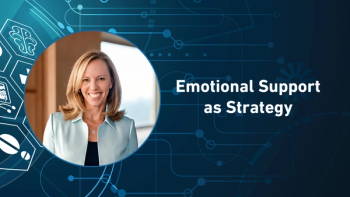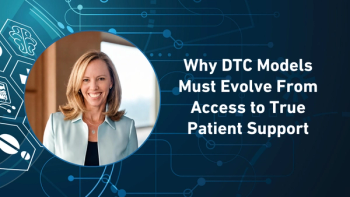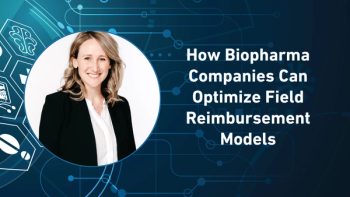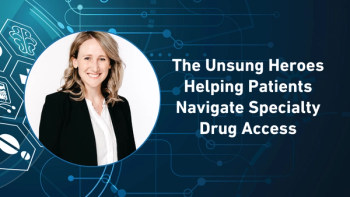
- Pharmaceutical Commerce - March/April 2016
Hub Services Special Report 2016
Connectivity with patients drives pharma growth
According to Trialcard, PAs are increasing at 20% per year; leading to more abandoned prescriptions (data from Avalere Health and CoverMyMeds). Credit: Trialcard
Market forces are driving pharma manufacturers and patients closer together—and now the pharma industry has a pathway with which to do this. The relationships are growing while pharma contends with regulatory constraints and the competing desires of other parts of the healthcare ecosystem—notably, physicians and pharmacies—to retain patient loyalty. For many, the pathway is being established through hub providers, organizations that are often independent third parties, and which provide access to financial support for high-cost specialty products, counseling and support for the patient journey, and highly valued data on outcomes and results valued by payers.
Hub providers (see box) mostly work as fee-for-service agents of pharma manufacturers—set up carefully to meet state and federal restrictions on improper financial inducements. In effect, since the manufacturers are spending money to improve outcomes and the patient experience, they are indirectly supporting overall healthcare while competing in the marketplace, a “virtuous circle,” as one industry participant puts it.
Connecting patients with the manufacturers of the therapies they use isn’t a radical idea; industry consultants have been talking about “consumer driven healthcare” and “patient centricity” for years. But what started as a fairly exotic approach to addressing patient needs after a prescription was written has blossomed into a vital service that accompanies most new product launches. And while the bulk of hub services are still directed at specialty products, especially those for chronic care and which might require complex administration such as infusion or diagnostic-therapeutic combinations, the hub model is expanding to drugs in a lower price range (roughly $500-1000 per month, in contrast to the drugs that can cost tens of thousands monthly), including oral solids. The concept of “hub lite” is now spreading through the industry. Competing against generic offerings, and showing better health outcomes through better adherence to therapy, are justifying the effort.
“The good old days of blockbuster product introductions pushed out to the world are long gone,” says Robert Appleby, president of H.D. Smith Specialty Solutions, a specialty distributor and hub provider. “We’re filling key gaps in the healthcare continuum with services that create a better patient engagement while providing the ROI that our pharma clients are looking for.”
The hub services business has grown in step with the evolution of limited or exclusive distribution agreements between manufacturers, distributors and specialty pharmacies. Typically, a manufacturer will set up a limited distribution network involving a set number of specialty pharmacies that are equipped to handle the requirements of the drug therapy (this can include requirements that FDA imposes on the manufacturer for REMS—risk evaluation and mitigation strategies—under which the manufacturer trains providers and pharmacies in the drug’s use). Manufacturers can set up an internal hub to centralize management of this network, or outsource it to a services provider.
Providing follow-on support to patients on a therapy has been a traditional role of pharmacies, and there has been some friction between the specialty pharmacy (SP) community and hub providers in recent years, but according to the hub providers, that has settled down considerably. “We’re working better together than in the past,” says Jan Nielsen, VP at Sonexus, a Cardinal Health Specialty unit. “Manufacturers understand the set of services that SPs do fantastically well in patient follow-up. However, not all SPs have the same capabilities. We can be there for the softer services that patients might need, such as transportation, copay programs, reimbursement support from foundations and the like.” She also points out that with lower-cost pharmaceuticals, the margin that represents the pharmacy’s fees is smaller, limiting the follow-on services the pharmacy can justify.
The foot soldiers in hub services: Case managers at call centers. Credit: Cardinal Health
Nielsen also draws attention to an advisory opinion issued by the HHS Office of Inspector General last August that emphasizes the value of a separation between manufacturers or SPs, and the services of a hub provider which, in this case, looked at the legality of free drug programs. According to the opinion (No. 15-11),* such programs are not inducements when the prescriber or manufacturer does not generate revenue by providing the drug, has limits on how much drug is dispensed to a patient to drive appropriate utilization, ensures that government healthcare programs are not billed, and is issued when at least a five-day delay is occurring between the time of prescribing and the benefit adjudication. “These free-drug programs are very valuable to patients, but they can be costly to implement across multiple SPs. We consolidate the program in a highly documented process, and reduce risk for the manufacturer.”
“We advise our pharma clients to get everyone—patient reimbursement providers, SPs and us in the same room, and coordinate patient contact,” says Nareda Mills, SVP of Ashfield clinical services. “An SP, for example, might start an adherence program with a patient not realizing that the manufacturer is already supporting such a program with the patient; patients get confused when they’re being called by one party about benefit verification, another about refills and another about an in-home nurse visit. At the end of the day, the manufacturer should call the shots.”
Ashfield is one of the organizations that doesn’t characterize itself as a hub provider, even though it provides many of the services expected from a hub, with the exception of benefit investigation and verification. Across its organization in the US (the company is a subsidiary of Ireland’s United Drug) there are clinical and commercial services, a behavioral sciences unit (for patient adherence programs), in-home nursing support, adverse-event reporting and multiple call centers.
Data Flows from Service Providers to the Manufacturer
LiquidHub retrieves data from wholesalers, hubs and specialty pharmacies, normalizes it and presents a comprehensive view to the manufacturer, who uses the LiquidAnalytics platform (with Tableau, a visualization tool from Tableau Software). “SRF” is “service request form,” an enhanced prescription request. Credit: LiquidHub
Specialty pharmacy-manufacturer relationships took some hard knocks last year, the result of the controversy surrounding Valeant Pharmaceuticals’ relationship with what has been called a “captive” SP, Philidor (which has since gone out of business). While Valeant is under investigation in several federal and state jurisdictions, it has not been charged with a crime. However, the practices at Philidor, including substituting higher-cost Valeant products for generic prescriptions it was handling, and sharing employees between the drugmaker and the pharmacy, raised serious concerns among payers. Valeant cut ties with Philidor (which it was bidding to acquire outright) and later struck a novel agreement with Walgreens to distribute its drugs directly through that chain. In late February, Valeant announced that an internal review committee found that $58 million in transfers of products to Philidor were improperly recorded as sales (which, in some contexts, could be considered a version of so-called “channel stuffing”) in 2014, necessitating a restatement of earnings for 2014 and 2015. “We have made mistakes in the past and our focus today is on executing our business plan and rebuilding trust,” said Howard Schiller, interim CEO.
How this is relevant to hub providers highlights the nature of their relationship. “We got some questions from clients as that situation played out,” says Loreen Brown, SVP, product strategy, at Lash Group, a unit of AmerisourceBergen Specialty Group. “But our answer is very simple: this is why a manufacturer should have a firewalled relationship with hub providers, to keep patient information separate. When we sit down with a manufacturer, we design a program and stick to it; manufacturers aren’t involved with adjudicating claims.”
Lash is arguably the largest dedicated hub services provider in the US, with 3,500 employees at five locations. Recent growth has necessitated the company’s move to a new, larger headquarters in Fort Mill, SC.
Another company expanding to accommodate rapid growth is TrialCard, best known for the innovative copay programs it has established in recent years. The company has now moved “up,” as it were, to providing full-fledged hub services; this “is a natural extension for us, since the financial elements of copay programs overlap with prior authorization [the requirement to seek pre-approval from a payer before a drug is dispensed] and copays themselves are addressing the cost-shifting going on from payer to patient,” says Scott Dulitz, VP, market access solutions, at the Cary, NC company. Dulitz makes the point that not only is TrialCard independent of SPs, but also any other part of the channel—specialty distributors or wholesalers as well. “Other companies, especially those attached to a PBM, have an economic stake in the manufacturers’ products which can lead to an inherent conflict of interest. We operate strictly as an agent of the manufacturer with a goal to lowering the barriers to access to a drug.” Recent growth at the company has been “explosive,” he says.
The situation between PBMs and manufacturers is also highlighted at H.D. Smith Specialty Solutions, which is promoting the hub lite model aggressively (the company also has a business unit, Smith Medical Partners, dedicated to the higher-cost products dispensed under a medical benefit rather than a pharmacy benefit). A couple years ago, H.D. Smith acquired TripleFin, a company focused on copay programs and free drug trials. Thomas Doyle, EVP, commercial solutions, at H.D. Smith, says that copays are more effective when managed as part of a hub service; the key is to make use of the connection between the patient and the manufacturer to encourage adherence to therapy, and not “just throwing copay cards around and hoping for the best.” It used to be that copay programs were looked on primarily as a way to get around formulary tiers by PBMs (which raise copay costs depending on the tier that a drug is placed on); now, “the picture is coming into focus that the copay program helps patients get on therapy, and the follow-up services help keep the patient on therapy. We’re seeing a little less pushback from PBMs, because they realize that ultimately better adherence will mean lower healthcare costs for their insurance clients.”
Hub lite, in H.D. Smith’s view, means being more judicious about the range of services offered through the hub. “The traditional players in this space emphasize their large staffs at call centers and high-touch services,” says Appleby. “We’re engaged with automating parts of the benefit verification process, which those traditional firms have no incentive to economize. We’re also using predictive systems to be more selective about the level of support needed to keep patients on therapy; by segmenting the patient population, we can address patient needs appropriately.” Costs can also be reduced by not immediately defaulting to a specialized nurse for patient coaching; rather, it’s done where it’s needed. He adds that in many cases, a brand team comes into H.D. Smith with certain expectations of how much patient support is needed; with the predictive analytics and with testing those expectations, the support program could be streamlined, saving costs. “We want to have a true partnership with our manufacturer clients,” he concludes.
White glove
The other extreme—high touch, “white glove” service is exemplified by Dohmen Life Science Services, which has aggregated a set of acquisitions over the past few years to provide what Dr. Eric Floyd, chief science officer at DLSS, calls “bench to bedside” service. The company has a clinical services unit that works with developers of therapies for orphan and ultra-orphan diseases, and a patient access unit that interfaces directly with patients. The idea is to provide a continuity of service from drug development to commercialization, with follow-on services to maintain adherence. Ideally, this is performed under an exclusive distribution agreement; DLSS would be the sole source of the drug, and would provide a full range of services, including in-home nursing support. (A legacy component of DLSS, which used to be known as DDN Logistics, provides national 3PL services for DLSS clients but not for the orphan and ultra-orphan services.) The company has a closed-door pharmacy to enable prescriptions to be filled.
Wendy White, SVP, rare disease, notes that many rare diseases have complex therapeutic regimens, and patients often face extremely difficult living situations. The “wraparound, white glove” services that DLSS provides pays off for drug sponsors in higher adherence and better outcomes; with some ultra-orphan diseases, keeping each patient on therapy has significant impact on the drug’s commercial success. All this is done under a direct-to-patient model; DLSS never takes title of the drug but acts only as the manufacturer’s agent. “Because we’re in such close contact with patients, we can collect the data that manufacturers want to justify the drug’s use to payers,” she says.
More data
New kinds of connectivity and data collection are coursing through the hub environment these days; significantly, some hub providers are following DLSS in providing clinical trial support leading up to commercialization.
Sonexus’ Nielsen says that the business unit has benefited from a relationship with a technology innovation center at the parent, Cardinal Specialty Solutions, to develop an electronic benefits-verification process, and has been working with two partner firms, CoverMyMeds and iAssist, to create a generic platform containing most or all of a drug company’s products (85 manufacturers have signed on so far). “This makes the physician’s work a lot easier, because not only does it take care of the enrollment, but it provides guidance on first-line, second-line and subsequent drugs that might be part of a manufacturer’s portfolio, details that the physician might be unaware of across multiple formularies,” she says. “The system is accurate, fast and will save money in the cost of healthcare.” Sonexus has representation on a workgroup within the National Council of Prescription Drug Programs (NCPDP), which is advancing standards in electronic prior authorizations.
Sonexus is also bringing out a mobile app (which is rebranded for each manufacturer’s program) to enable real-time connectivity between patients and the manufacturer, who can poll patients on therapy progress, side effects and the like. “We started this as an extension of our adherence services, but it’s become very valuable in the clinical trials we’re working on with clients,” she says.
At Lash Group, an analytics-based program called MyCare Commitment provides segmentation on patients based on their adherence issues. “This kind of analysis isn’t new to the industry, but our version generates great data about the drug’s use, allowing us to customize patient support more efficiently,” Brown says.
Most hub providers tout their ability to assemble data from a variety of SPs, and from the patients themselves, to report outcomes back to the manufacturer. However, the intense need for reliable data, coupled with the capabilities of new software systems, is driving part of that business toward dedicated IT firms who process the hub and SP data themselves and report them to the manufacturer. This setup has been the driver of the dramatic success of LiquidHub, which uses the
*
Hub services: what’s (not) in a name
For most of this decade, and in some cases longer, a growing group of companies has been providing what are commonly called hub services; yet many in the field resist that identifier. Part of this is history: some hub providers started as patient call centers; some started as operators of copay and financial assistance providers, and some as reimbursement and benefit-investigation firms for patients. And in some cases, the companies feel that calling themselves a “hub” is a straitjacket limiting the perception of their offerings (such as organizations that also do contract sales). It is also a fact that numerous pharma companies have staffed up an internal hub service—something of a risk since the restricted patient health information (PHI) needs to be firewalled from the rest of the company. And then there are specialty pharmacies, who offer some of the same services that hub providers do.
As Pharmaceutical Commerce defines it, a hub provider has five essential elements, and few key indicators:The essentials:
- It provides patient onboarding after a scrip is written
- It can perform benefit investigation/benefit verification, and helps patients connect with charitable foundations and other sources of financial support
- It “triages” the prescription to the specialty pharmacy (SP) best situated (geographically and as part of the manufacturer’s designated network of SPs)
- It provides ongoing contact with the patient (usually through a call center, but including in-home nursing support where justified), and manages adherence programs and patient counseling
- It is funded by pharma manufacturers, usually on a fee-for-service basis
Key indicators:
- It can arrange for “nonstandard” patient support, such as transportation to or from a health center or doctor’s office
- It can provide quick-start services to get patients on therapy even while reimbursement is being worked out (or even free drug)
- It reports data on the performance of multiple pharmacies, itself and patient outcomes directly to the manufacturer
All this being said, the dominant hub service providers for specialty pharmaceuticals remain the mail-order pharmacies that are adjuncts of pharmacy benefit managers (such as Express Scripts’ Accredo, Caremark or Optum), and major wholesalers that have a specialty division.
Articles in this issue
over 9 years ago
Immunoglobulin (IG) drives the blood-plasma therapeutics marketover 9 years ago
Agenda set for 2016 HPCLC Conferenceover 9 years ago
J. Knipper heads CBI conference on sampling managementover 9 years ago
Schreiner introduced a double-capping feature to vialsover 9 years ago
Specialty pharma becomes 'hub enabled'over 9 years ago
Use data analytics to monitor 340B discount drug pricingover 9 years ago
A Conversation with Matt Wallach, Veeva SystemsNewsletter
Stay ahead in the life sciences industry with Pharmaceutical Commerce, the latest news, trends, and strategies in drug distribution, commercialization, and market access.





